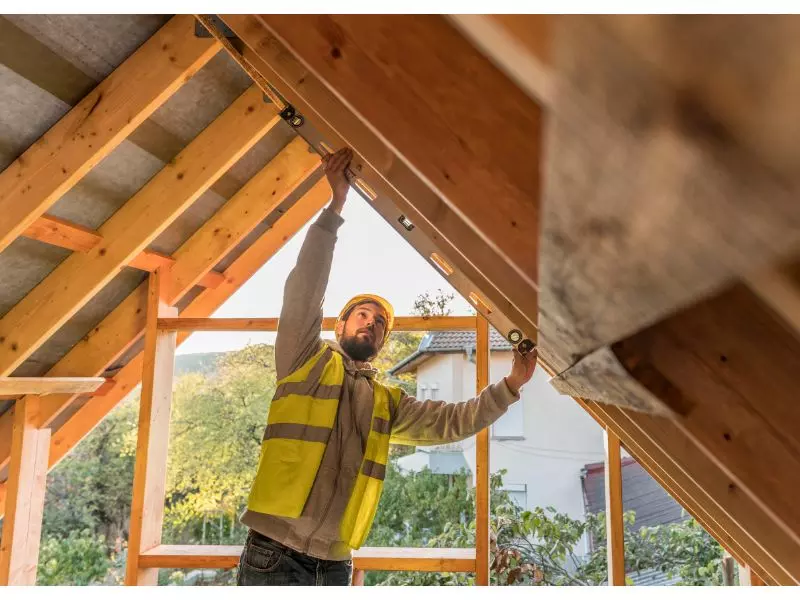
Light frame construction or framing as it's known in the residential construction sector is the most commonly used form of house construction.
It involves creating a structure of vertical studs that provide a frame for the interior and exterior walls. These vertical elements support horizontal wooden elements, or joists, that run the entire length of the floor and between walls - when this happens they're known as beams. The joists act as supports for the ceiling and the floor.
Understanding the basics of wood framing for your home
Today, most builders use platform framing—in which each tale is built on top of the one before it—as their preferred method. A steady work surface can be created by utilizing a single floor as the base for the next level of construction. It also permits woodworkers to utilize standard dimensions dimensioned lumber rather than longer or more natural cuts, as well as economize on the use of materials.
That being said, there are still a number of different types of residential wood framing construction methods. Let's take a look at each:
Balloon Framing
This type of framing gets its name from the fact that walls are built up one story at a time 'ballooning' out from the floor. The walls are typically constructed of 2x4s (or 2x6s) and require a great deal of wood, making it less popular today.
Platform Framing
As mentioned earlier, platform framing is the most commonly used framing technique today. It utilizes prefabricated wall panels that are raised into position and secured to the floor and roof. Walls are generally constructed of 2x4s or 2x6s.
Post and Beam Framing
This type of framing is often used in large, open spaces where a more rustic look is desired. The walls are typically made of large timbers (usually 8" x 10" or larger) and the beams that support the roof and floor are also made from wood.
Framing a House with Logs
This is perhaps the oldest form of wood frame construction and is still used today, albeit sparingly. The logs are usually hewn into square or rectangular shapes and then notched to fit together. Mortise and tenon joints are commonly used to join the logs together.
Whichever type of wood framing you choose for your home, it's important to understand the basics so you can ensure a quality build. If you're not comfortable doing it yourself, be sure to hire a qualified wood framing contractor to do the job for you.
Components of Wood Framing
Floor
Joists
Horizontal framing components that span the length of the floor are known as floor joists. They provide the foundation for the house's ground and platform on which wall panels will be attached. The floor joists are covered with a subfloor (usually made of plywood).
Floor Truss
A floor truss is a pre-fabricated wood truss that is used in place of floor joists. Floor trusses are typically made from 2x4s or 2x6s and are designed to span long distances.
Sheathing
The sheathing is a layer of wood that is attached to the exterior of the floor joists. It provides a surface to which the finish material (siding, brick, etc) can be attached.
Walls
Interior walls can be divided into two types: load bearing and non-load bearing.
Load Bearing Walls - A load bearing wall is a wall that transfers the weight of the roof and upper floors to the foundation and walls below. Most exterior walls are load bearing.
Non-Load Bearing Walls - A non-load bearing wall is a wall that does not support the weight of the roof and upper floors. Interior walls that do not have a door or window and are not attached to another wall are typically considered non-load bearing.
Sil
A sill is the wood frame that rests on top of the foundation and supports the wall plates. The sill is usually made from 2x6s or 4x4s.
Wall Plate
The wall plate is a horizontal piece of wood that sits on top of the sill and forms the bottom of the wall. The wall plate is attached to the wall studs.
Wall Studs
The wall studs are the vertical pieces of wood that make up the walls. They are attached to the wall plates and run from the sill to the top plate.
Top Plate
The top plate is a horizontal piece of wood that sits at the top of the wall studs. It is attached to the roof rafters and forms the end of the wall.
Bottom Plate
The bottom plate is a horizontal piece of wood that sits at the bottom of the wall studs. It is attached to the floor joists and forms the foundation for the wall.
Header
A header is a horizontal piece of wood that is used to support the weight of a door or window. It is attached to the wall studs and sits on top of the sill.
Ceiling
Ceiling Joists
Horizontal framing components that span the width of the ceiling are known as ceiling joists. They provide the foundation for the house's roof and are typically covered with a ceiling material (drywall, wood paneling, etc).
Ceiling Trusses
A ceiling truss is a pre-fabricated wood truss that is used in place of ceiling joists. Ceiling trusses are typically made from 2x4s or 2x6s and are designed to span long distances.
Roof
Rafters
The rafters are the wood frame that support the roof. They are attached to the top plate and run from one end of the house to the other.
Decking
The decking is the wood that is laid over the rafters to form the roof. It is usually made from plywood, OSB, or treated wood.
Shingles/Roofing Material
The shingles or roofing material are attached to the decking to form the roof.
